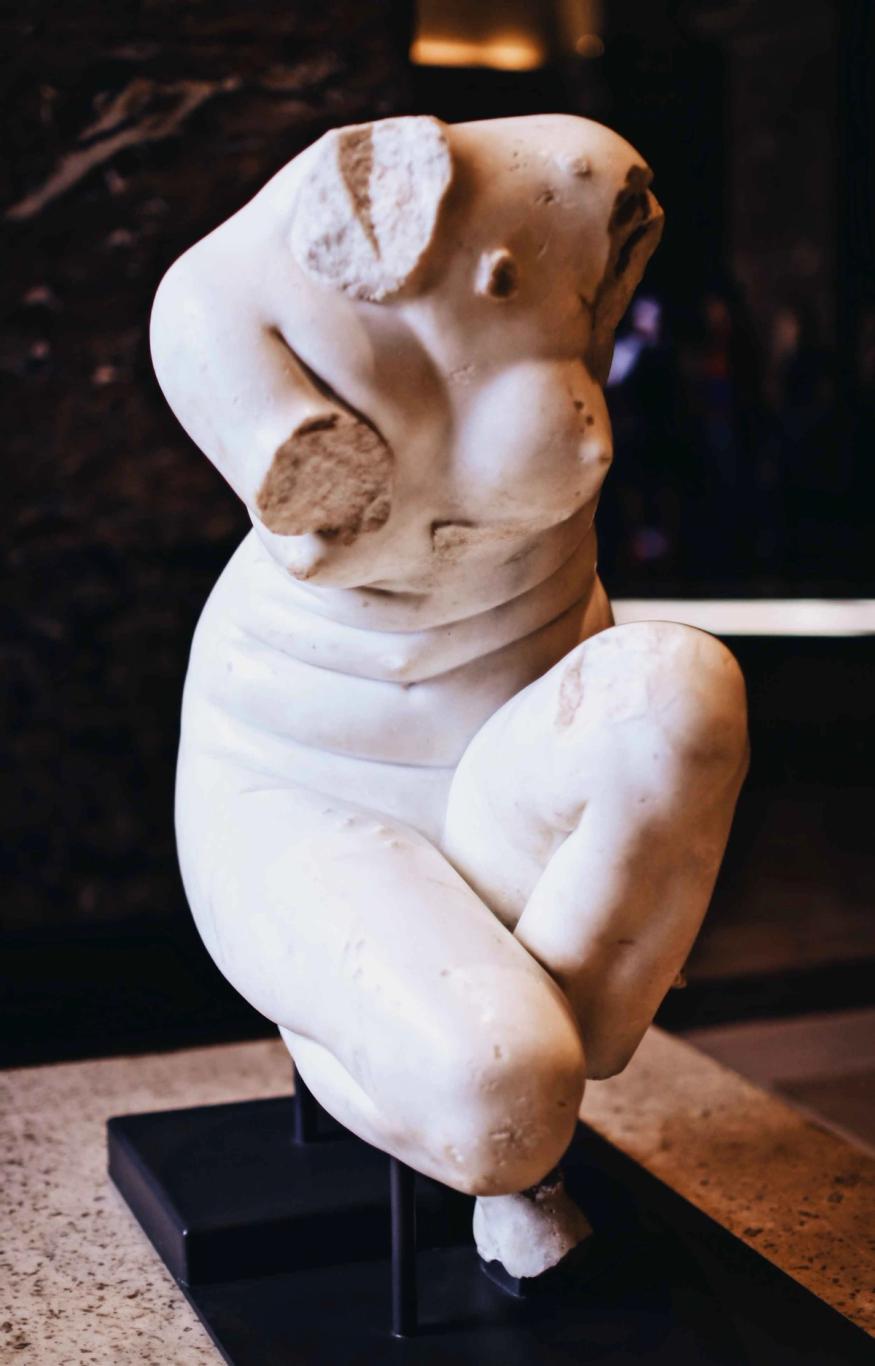The World Used to Love Fat Women
Published on 12/30/2020I always thought there was a reason why we hated fat people. I saw this hatred within myself, as it drove me to an eating disorder that irreversibly ruined my relationship with food, exercise and my own body. Being thin was never an option; it was a need. And even once I stopped purging and began eating correctly, I was still on that drive to be thin, I assumed that everyone was. Then 2020 came barreling in, and along with many others, I faced the lockdown weight gain. But this time things were different, as this time I finally questioned whether I need to be thin, whether I need to lose weight, or if perhaps the answer lay in loving the size I am now.
The hardest fat woman to love is yourself. It feels like the whole world is pitted against us and begging us to fail. But this wasn’t always the case; fatphobia didn’t start until the century prior. Before that, not only were we not fatphobic, but we actually adored fat women. We loved their full figures and powerful bodies. They were beautiful, and they still are, we just need to be reminded of that.

Ancient Greece
Oh Aphrodite, Goddess of Love and the most beautiful woman to have ever lived, do tell us… were fat women considered to be beautiful in Ancient Greece?
Ancient Greece offers a fascinating example, as during this time, it was men who were held to impossible beauty standards! Beauty was considered a blessing from the gods, and a perfect exterior was hiding an inner perfection. So basically, if you looked good, then you were good! Men would spend up to eight hours a day working out, and the average Athenian or Spartan citizen would have impeccable muscles. They aimed to be thin-waisted, muscular, toned and feature a small penis - some things have certainly changed! Statues of the time are believed to have been made from casts of real men, so you can see just how intensely they took their workouts!
But this differed for women, who were created to be kalon kakon or “the beautiful-evil thing”.
“She was evil because she was beautiful, and beautiful because she was evil. Being a good-looking man was fundamentally good news. Being a handsome woman, by definition, spelt trouble.” - BBC News Magazine.
You couldn’t really win by being beautiful, a story as familiar today as it was then. But what did the Greeks consider to be beautiful? Wide hips, pale arms and big booties! Aphrodite was also known as Aphrodite Kallipugos, or Aphrodite of the beautiful buttocks. The bigger the behind, the better, the Greeks would say!
Medieval Times
Given that most people weren’t living until thirty during the Medieval period, you would think they’d be less picky in what makes a woman attractive. They wanted long necks, small teeth, pale faces, long hair and a prominent stomach. The fact that they liked prominent bellies is often neglected, given their fondness for small waists. But during the medieval period and the hardships accompanying it, being fat was a sign of prosperity. You had enough to eat, you’re more likely to survive, and so you’re attractive!
The Renaissance Period
Museums are brimming with paintings and sculptures of this period, and in the majority, you’ll see fuller figured women. During this time, larger women were deemed to be more powerful and beautiful. Consider the Mona Lisa, with her broad shoulders and thick neck, a lovely round face. Or Titian’s laid out nudes, bearing their full figures in all their glory. Fuller figured women were believed to display key signs of fertility through their larger breasts and bigger hips, making them highly popular.

In the Renaissance period, not only were fatter women idolised, but skinny women were seen to be unattractive. This isn’t what we would hope for nowadays, as reverting the body shame to thinner figures gets us no further. Instead, let it display that thin wasn’t always preferred; it isn’t an evolutionary concept, but rather a societal message we’ve ingested due to the media.
When did it all change?
More recently than you would think! Due to corsets and other horrors of centuries prior, we often mistake skinny for being an ideal that has been held for centuries, but this simply isn’t the case. Corsets were intended to create the desired shape for dresses, but there was never the intention for women to be that thin or considered ugly if they were not.
In the late 19th century, the love of fat women begins to deteriorate, as an idealised woman became synonymous with a small waist, sloped shoulders, tapered fingers, slender limbs and delicate feet. It was known as the “steel engraving lady”, associated most commonly with frailty, weakness and subservience, and with that high social status and moral values. This is precisely where the problem begins, as a woman being frail is considered preferred. Then she’ll take up less room and hold fewer opinions, or so they would hope.
But by the end of the century, there was another idealised character known as the “Gibson Girl”. She combined the features of the steel engraving lady with the voluptuous woman of centuries prior, resulting in a slender waist and legs, but curves through her hips and breasts. You could consider this preferable as they’re not fetishising an appearance of illness. Still, this character is just as concerning in reality as men are beginning to believe that a woman’s body is a pick n mix. That you can choose the features of fatness that you like and combine them with the rest. This is a belief that has followed us into the 21st century, where it has been cemented with the aid of plastic surgery, the Kardashians and photo editing.
But by the 1920s, the Gibson Girl was a memory, as women were using starvation diets, rolling machines and weight loss products. We had begun the quest for thin, whatever the cost of it. Trends would change slightly over the century to come, namely how large the buttocks and breasts could be, or whether athletic was preferred over frailty, but large, healthy appearances were in the past.
The denigration of overweight women accompanied this. The focus was shifted to the health risks of being overweight, rather than those of being underweight. In popular culture, overweight women were stereotypically portrayed as dumb, greedy and unable to find a romantic partner. Why? Because this suited the products being sold, the weight loss industry had escalated to a billion-dollar corporation, and so they needed women to keep believing that thin was the only way forward. The media also profits highly from it, selling magazine covers of women who don’t really exist, of a size that isn’t possible naturally.

But now you realise that this wasn’t always the case, fat was not always synonymous with unattractive. This isn’t a fact, a biological construct, it is something we have been taught socially. From a young age, we have inherited fatphobia. And this is a good thing, as this means it is reversible. By growing aware of this issue, we can begin to tackle it. We can address the negative connotations that appear and work past them. Fat is not always bad, just like thin is not always good.
When in doubt, ask yourself the following:
“Would I think this if it were a man instead of a woman?”
Featured posts

Fleur
Welcome to Symptoms of Living! A place where I like to relieve myself of the barrage of thoughts and ideas filling my mind. Here I'll take a look at various topics, from books to BPD, series to self-harm, there's nothing that we can't, and shouldn't, talk about.
Having struggled with mental illness since the age of 15, one of the hardest parts was how alone I felt in it. While mental illness is beginning to be discussed more openly, and featured in the media, I still think there is room for improvement. So whether it is mental illness or merely mental health, a bad day or a bad year, let's make this a place to approach it and strip it back. Everyone has their own symptoms of living, and you certainly won't be the only one with it.
Would you like to receive my top monthly articles right to your inbox?
For any comments/questions/enquiries, please get in touch at:
info@byfleurine.com
I'd love to hear from you!